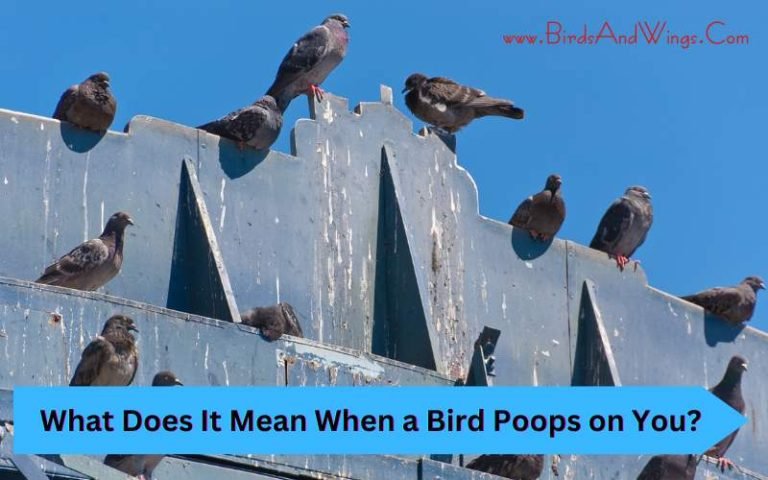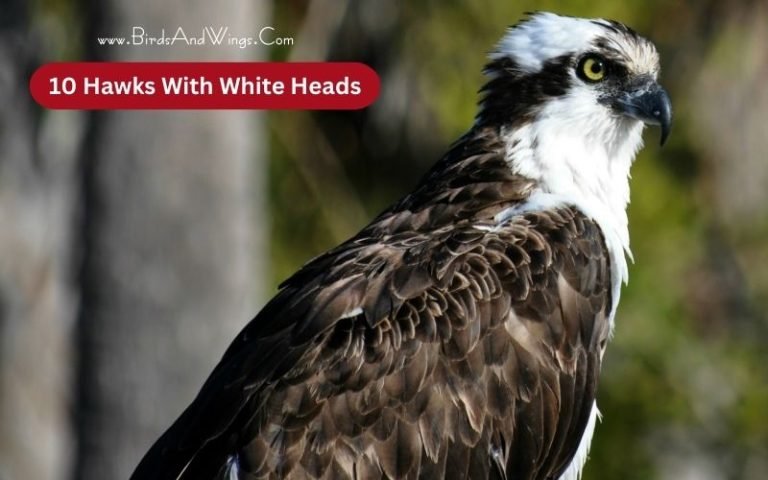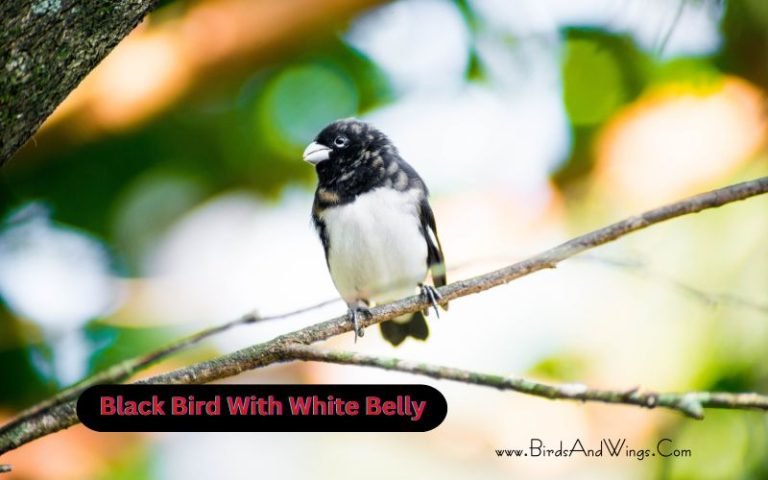Top 20 blue and black birds (Photos, Facts, And ID)
Want to know the top blue and black birds? Birds with diverse plumage and vibrant colors are mesmerizing to look at. Among those birds with blue and black plumage are stunning to observe.
This article will explore the top 20 blue and blackbirds and go through their physical characteristics, geographic distribution, feeding habits, adaptation quality, and other attributes of nature.
Blue and Blackbirds: An Overview
Birds with blue and black combination plumage have captivating features which make them more attractive. Let’s explore their physical characteristics, geographic distribution, habitat preferences, and feeding habits which help them to adjust and survive in nature.
Physical Characteristic
Blue and black birds’ physical structures are in various sizes and shapes. But all these birds’ general physical features is the combining of blue and black feathers on their body.
The color of blue can be deep ocean blue, sky blue, or indigo blue with blackish shiny feathers on their bodies. This combination makes them look more significant.
Geographic Distribution
These blue and blackbirds can be seen in many places around the world. Based on geographical location, blue and blackbirds can be seen in South America, North America, Asia, Europe, and Australia.
Every species has its own range and region where it can easily adapt to nature and the ecosystems of that environment.
Habitat Preferences
These unique vibrant species choose their habitat based on their ecological, environmental, and sustainable preferences. Some choose their habitats in deep dark and dense forests.
Some prefer coastal areas and urban areas for living and nesting. Some prefer wetlands, watery places, woodlands, and mountains to live on. All these places provide them with a balanced and sustainable diet and other necessary things to live and survive on.
Feeding habit
Based on their environment, and physical structures their feeding habits also vary from one species to another. Though it’s not a measure difference. Some species eat berries, fruits, nectar, and other fruits. Some species eat insects, small fish, mammals, spiders, seeds, nuts, etc.
Top 20 blue and black birds
This section will discuss the top 20 blue and black birds along with their physical description, habitats, distribution, habits, behavior, and special adaptation to survive in nature.
1. Steller’s Jay (Cyanocitta stelleri)

Steller’s Jay is a small bird that is famous for its blue and black plumage. They are familiar in North America. They have a grayish-black head and blue features covering the body. They had a long crest Jay on their head that made them look more appealing.
They prefer forest areas for their habitats such as mountains, and tops of trees. For eating they prefer seeds, nuts, berries, and other fruits also. They have problem-solving skills. They can also make loud vocal sounds to communicate.
2. Blue Jay (Cyanocitta cristata)

Blue is another bird with vibrant colors over their bodies. These little birds have a mix of blue and black plumage over their bodies. In size, they are 20 to 30 cm. Their wingspan is around 34 to 43 cm long. It has vibrant blue with black wings and white plumage.
Blue Jay’s eyes, beaks, and legs are black. They are familiar in North America and the United States. They eat berries, peanuts, shells, grains, and seeds. Blue Jay can make several sounds and Sometimes they can even imitate human sounds also.
3. Common Grackle (Quiscalus quiscula)

Common Grackles also have vibrant blue and black plumage over their bodies. They have long tails, black beaks, and yellow eyes. Their wings are a dark brownish color. They are mostly familiar in North America and reside near watery places.
They make their nests in colonies in human-made structures. They have harsh voices similar to buzzing sounds. They can imitate human or other animals’ sounds.
4. Indigo Bunting ( Passerina cyanea)
Indigo Bunting has a beautiful vibrant color of blue and black plumage over their bodies. They have small beaks. Their wings are 18 to 23 cm long. Their weight is around 15 grams.
They are migratory birds and are mostly familiar in South America in the winter season. They locate their migration journey by calculating star angles.
5. Blue Grosbeak (Passerina caerulea)
Blue grosbeak is another small species of vibrant blue and black combinations of plumage. They have deep blue, black, and brown plumage over their bodies. Their wings are around 26 to 29 cm. Their weight is about 26 to 32 grams.
They make their nests in the small trees or bushes. They eat snails, spiders, grains, and fruits. These species are mostly familiar in North America, Central America, Mexico, and the United States.
6. Tree Swallow (Tachycineta bicolor)
Tree Swallow bird is also covered with vibrant blue and black plumage. Their half upper part of the body with eyes is blue and from cheek to chest is white along with the tail and wings are blackish brown. They are familiar in North America, Alaska, Canada, California, and New Mexico.
They prefer structured nests or man-made nests for their nesting. During their breeding seasons, male tree-swallow birds persuade an unknown female and perform courtship dances to invite her for mating. They eat spiders, fruits, insects, beetles, and ants.
7. Splendid Fairywren (Malurus splendens)
Splendid Fairywren are small birds with vibrant light blue and blackish plumage with long tails. They are about 14 cm long. They are mostly familiar in Australia.
They breed from mid-August of heavy rain to January. Their nest is made by their female mates. They feed ants, grasshoppers, spiders, bugs, fruits, flowers, and seeds.
8. Bee hummingbirds
Bee hummingbirds are the smallest avian species with vibrant blue and black plumage. Their upper parts are shiny blue and chests are a combination of black and brown plumage. Their average weight is almost 2 grams and their length is around 6 cm.
They are familiar with the islands of Cuba and the West Indies. They try to invite their mates by showing their tail features. They breed between March – June. Female birds lay one or two eggs. Collecting nectar from flowers is their main food to eat.
9. Purple Martin (Progne subis)
Purple Martin is a medium-sized bird that has navy blue and purple plumage over their bodies with dark blackish features on top of it.
They are familiar in the United States, California, and New Mexico. Before breeding they migrate to North America and after breeding they go to South America. Male birds secure their nests and their territory during the breeding process.
10. Shining Honeycreeper (Cyanerpes lucidus)
Shining honeycreeper is a tiny bird with a mixed combination of shiny blue and black plumage. They are familiar with Colombia, Central America, and Mexico. Their body is around 10 cm long and their weight is around 11 grams. They are mostly seen in pairs with their partners or in groups with their families. They eat nectar, berries, and insects.
11. Shiny Cowbird (Molothrus bonariensis)
Shiny cowbirds have a mixture of blue and black features on their body. They are familiar with South America, Caribbean Islands, and the United States.
They prefer mostly dark dense forests for breeding. For habitats, they prefer open fields like agricultural places or deforestation places. During their courtship male birds sing a song for female birds and after the song they bow to each other. They do their courtship dance in the fields, ground, trees, or while flying also.
12. Purple Sunbird (Cinnyris asiaticus)
Purple Sunbirds also have shiny blue and black plumage on their body with sharp pointed downward beaks. They are familiar in Asia, and some parts of the Arabian peninsula.
They prefer thin forests and gardens. Mostly their breeding season starts in the monsoon of April to June. In the courtship, males perform courtship dances to attract their mates.
13. Rook (Corvus frugilegus)
Rook is another species with shiny vibrant blue and black features. They are familiar in Western Europe. They partly make their nest in the peak of the tall trees which is mostly close to villages. Their weight is around 46 cm and their wings are around 81-99 cm long.
Their black features sometimes give a shiny bluish color in bright sunlight or daylight. They eat cereals, potatoes, roots, berries, seeds, and earthworms.
14. Asian Fairy bluebird (Irena puella)
Asian Fairy bluebirds have black plumage on their head and blue plumage around their neck to back. Their tails are a combination of blue and black color. They are mostly familiar in Asia, and Indochina.
These birds are around 27 cm long. Their beaks, and legs are black and their eyes are reddish. They feed nectar from flowers, fruits, and insects to live on. Their breeding seasons start from February to April.
15. Philippine Fairy bluebird (Irena Cyanogastra)
Philippine Fairy bluebirds also have blue and blackish plumage. They are mostly common in Philippines islands like Luzon, Samar. They prefer mostly dense forest areas to live in. They roam in groups with other birds like blue headed fantails, and Philippine bulbuls.
16. Satin bowerbird (Ptilonorhynchus violaceus)
Satin bowerbirds have beautiful bluish-black plumage over their bodies. They are mostly familiar with forest areas such as rainforests in Eastern Australia.
They eat beetles, grasshoppers, seeds, and insects for their living. During the courtship ritual, male birds decorate the places with blue items like plastic, straws, berries, flowers, and snail shells-like structures surface to attract their mates.
17. Black-capped Kingfisher (Halcyon pileata)
Black-capped Kingfisher is mostly familiar in Asian countries like China, Korea, India, and Thailand. They have beautiful blue plumage wings and black heads.
Their beaks are sharp red and slightly upwards. Their necks and chests are white. They are about 28 cm long. They prefer mangrove forests and rivery areas for their habitat.
18. Black-throated blue warbler ( Setophaga caerulescens)
Black-throated blue warbler birds are another mixture of blue and black feathers. Their faces and throats are black with white chests. The top of their head and back is vibrant blue.
They eat berries, seeds, fruits in winter, and caterpillars, spiders, and crane flies at other times. Their breeding season starts in May and finishes in July. Male birds start singing to attract their mates. If they get successful they continue to sing and other male birds leave the place and habitats
19. Southern cassowary (Casuarius casuarius)
Southern cassowary birds are covered with immense black feathers and their throats and face are blue. They have large claws with a long crest on their head.
Their height is around 180 cm and their weight is 85 kg. They are very dangerous and aggressive birds to humans and other species also. They can jump and attack with their sharp claws on someone or something.
20. Black Grouse (Lyrurus tetrix)
Black Grouse is also known as a game bird. It has vibrant and unique feathers of blue and black. They have red plumage or patches over their eyes. They prefer wooded lands or places but in winter they go to dense forest areas.
They are familiar in Europe, Russia, Poland, and Ukraine. They perform courtship rituals to attract their mates. Males do a competition with other male birds to attract their mates.
Conclusion
In conclusion, birds that have vibrant blue and black plumage are stunning to observe. Their vibrant feathers make them look even more appealing among other avian species.
Some of the top 20 blue and black birds are also considered to be types of black birds. These birds, known for their striking blue and black plumage, possess various shades of black within their feathers. While they are primarily regarded as blue birds due to their vibrant hues, their shared characteristics with black birds cannot be overlooked.
There are many similar species like this that have diverse color combinations such as blue birds with orange chests. You can learn about these wonderful species and can also explore their fascinating worlds which will enlighten you about their behavior, distribution, feeding habits, and survival tactics on earth.







